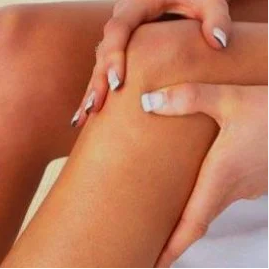
The knee pain – a widespread symptom, notes about problems in the body – causing the disease of the joints or just pressure on the feet.
It's hard to find someone, never experiencing pain in the knees in a particular period of life. Discomfort, to the movies, or pain of varying intensity in the knee joints are presented as in adults, and in children due to many reasons. The bigger the man, the greater is the probability of occurrence of various diseases, the first sign of which is the pain in the knees. This is due to the age characteristics of the organism: the slowing of the metabolism, the wear and tear of the cartilage of the joints, joining other problems with the musculoskeletal system, blood vessels, nerves.
Because of the complex anatomical buildings, many structures and are faced with significant loads, and often overload, the joints of the knee is very vulnerable. Damage to any element of the structure, for example, synovial markets, leads to disruption of motor function of the knee and, consequently, pain stockholm syndrome. Chords and menisci are considered the most vulnerable, have been injured in 80-85% of cases.
Anatomical structure of the knee
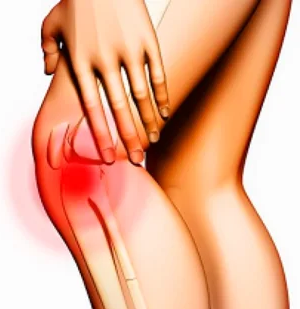
The knee comprises the knee, the distal end of the femur with two condyles and κάτωεσμου, tibial tubular bones, muscles, nerves, blood vessels, ligaments, heat, patella (kneecap), the joint bags and meniscus.
Hinge – one of the large joints of the body. On this suitable thigh. The articular surfaces of the lateral (outer) and medium - (internal) condyles articulate with the patella and tibia. The menisci, which represent connective tissue cartilage, are used in shock absorbers of the joint. Thanks to them the rational distribution of the weight of the person in the tibial plateau and increase the stability of the joint. Minute, two-headed, paliperidonesee and other muscles phase capsule-ligamentous structures, which provides motor activity of the knee.
The elements of the knee that connected with a lot of tangles. On the inside of the joint there are two lateral chords – back and forth. Podmyshalsky bedernau bones come together with the fibula and tibia bones parallel strings. Vertical popliteal the link is located on the back of the bursa of the knee. From the series of the articular cavity produce home – synovial capsule, not communicating with the joint. Blood supply of the elements of the knee is thank you network of blood vessels and innervation – nerve fibers.
Causes of pain in the knee
There are many causes of pain in the joints of the knees, which can be divided into several groups.
Traumatic injuries of the elements of the knee:
- Injury to the knee. As a result of the rupture of the blood vessels happens local bleeding in the soft tissue of the joint. Redness, swelling, damage to the nerve endings leads to pain, difficulty in movement.
- Complete or partial rupture of the ligaments. Most often diagnosed with a partial violation of the integrity of the internal lateral ligaments, resulting from excessive eversion of the tibia outwards.
Outer package is torn less often compared to the inside. This is due to the strong decline of the tibia inwards, when the report of feet, for example. The gap Phillips of links is inevitably accompanied a hemarthrosis.
Complete rupture of the two joints is often combined with the destruction of the enclave, a tear inside the meniscus. Such trauma leads to excessive mobility of the knee joint, accompanied by severe pain, the intensity of which depends on the degree of rupture.
- Hemarthrosis knee – rupture of blood in the cavity of the joint. It's traumatic and non-traumatic in nature. Traumatic hemarthrosis observed changes line meniscus, complete or incomplete line breaks, ligaments, intra-articular fractures, bruising on the area of the knee. Non-traumatic option is one of the symptoms of the disease that is characterized by increased fragility of blood vessel walls or disorder of blood coagulation system. These include hemophilia, scurvy, severe haemorrhagic diathesis. Accumulated in the joint cavity presses the cloth, breaking the circulation of blood in them. A special pigment – hemosiderin – negative affect strings, hyaline cartilage, synovial bag, leading to a loss of elasticity. The result of the destruction of the synovial bursa is swelling of the villi and enhanced production of synovial fluid. The result of repeated bleedings becomes dystrophy and destruction of the joint.
- Knee miniscope – a violation of the integrity of meniscus of the knee. In the lateral form has damage to the outer meniscus, with the medial – inner. This is one of the most frequent but difficult diagnosis of lesions of the knee. In the danger zone of the disease are not only athletes involved in intense workouts, but also ordinary people. Torn meniscus can happen from the sudden unusual motion during the rotation of the torso, the report feet, powerful blow to the knee.
- Dislocation of the patella – abnormal displacement of the patella. Trauma is the diagnosis is not more than 0,7% cases of the total number of dislocations. Most often occurs external dislocation, at least – the internal, very rarely – vertical or torsion. Incomplete dislocation of the patella is determined by over the lateral (outer) condyles, in full – outer-space from the lateral condyle.
- Closed or open fractures of the knee, the upper part of the bone of the tibia or the lower part bedernau bones. Such as injuries, often in combination with the defeat of the soft tissues of the knee, causing massive bleeding, excessive mobility in the area of the knee, the deformation.
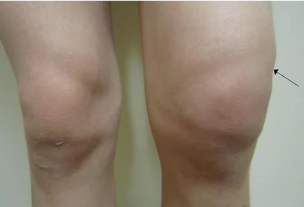
Inflammatory and degenerative-dystrophic diseases of joints elements of the knee:
- Arthritis – inflammatory defeat of the knee joint. Similar mechanism of development of pathology observed in osteoarthritis, ankylosing Spondylitis, rheumatoid arthritis, gout (the deposition of urates in the joints).
- Osteoarthritis (gonarthrosis) with lesions of the knee non-inflammatory in nature, affecting all the structures and leads to severe degenerative changes.
- Bursitis with inflammation of synovial bourse leads to pain during flexion-extensor movements of the knee.
- Periarthritis of the tendon of the knee – inflammation capsules leg goose, knee tendons, and the muscles and ligaments that surround the joint. When the pain occurs mainly during the descent of the stairs, especially with heavy load, and is focused on the inner surface of the knee.
- The chondropathy of the patella – degenerative-necrotic changes of articular cartilage (posterior) surface of the patella. The degree of destruction may be different: from the phase easy until tender cracks, and full of friction.
- Chondromatous – severe chronic disease, due to a dysplastic process with islet degeneration phase membrane synovial shell in the cartilage – gondrom. It is not excluded ossification of individual cartilage tel.
- Baker's cyst – forming dense elastic spheroid, volume of education in the popliteal fossa, which is located on the opposite side of the patella. The cyst is clearly visible in the flattened position of the knee. Cause discomfort, pain in the popliteal area. With important sizes pushing the vessels and nerves, leading to disturbance of innervation and blood circulation.
- The disease Hoff – disease, accompanied by the defeat and further degeneration of adipose tissue, leave it around the joint of the knee. Pinched, swelling and other damages of fat cells – adipocytes – finish the replacement by dense fibrous tissue. Finally, a mid-term operation "fat pads" in breach of the same, the adipose tissue is not capable to perform the role of shock absorbers.
- The disease Osgood–Schlatter – pathology characterised by necrosis irregular part of the tibia. It is diagnosed in adolescents from 10 to 18 years, who are involved with sports. Below patella appears painful, if left untreated, leads to limitation of motion of the foot or full immobilization, and malnutrition of the muscles.
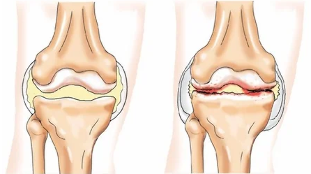
Diseases in which it is possible irradiation of pain in the knee:
- Coxarthrosis hip – years of the defeat of the hip, accompanied by the progressive degeneration and dystrophic changes in it. Often the pain spreads down the outer surface of the thigh up to the knee or below.
- Neuropathy sciatic nerve – non-inflammatory defeat of the nerve as a result of compression crushing or spazmirovannah of the blood vessels. This nerve is the legs, starting in the middle and passing through the coccyx and the pelvis. Block at any one point in the entire leads to disruption of the sensitivity or throbbing pain.
- Fibromyalgia – extra-articular defeated soft tissues non-inflammatory character with a collection of symptoms as arthralgia, muscle weakness, depression, etc.
Some systemic conditions that cause knee pain:
- Osteoporosis is a bone disease systems chronic progressive course, changing the mineral composition and bone density. "Washout" of calcium from the bones leading to fragility. The process is accompanied by pain or soreness pain in the limbs.
- Tuberculosis of the bone. Tb defeated phase of bone leading to permanent severe pain.
- Osteomyelitis – disease infectious-inflammatory nature, impressive all the structural elements of the bone. The result like this, for example, tuberculous and non-specific, most often coccal, osteomyelitis is hyperemia of the skin, swelling, local sharp pain in the bones and muscles, febrile temperature.
- Some infectious disease. When Reiter's syndrome, in addition to the participation in the process of the urinary tract and of the eyes, affects the joints. One of the manifestations of Lyme disease are artralgia.
Kinds of pain in the knees
Depending on the etiology character and intensity of the pain may be different.
- Aching. When arthritis, osteoarthritis.
- Acute, strong. With fractures of elements of the knee, torn ligaments, bursitis, injury in the knee, acute miniscope, deforming osteoarthritis.
- Throbbing. The sound of deforming osteoarthritis, injury to a meniscus.
- Enjoys opens. When osteomyelitis.
- Stupid. When bursitis, chronic Legg.
- Burning. When compression sciatic nerve, tuberculosis process dice.
- Shooting. When jamming interruption of the trunk.
- Pain during walking. When the Baker's cyst, bursitis, arthritis, gonοστεοαρθρίτιδα, periarthritis.
- The pain in peace. For gout, arthritis.
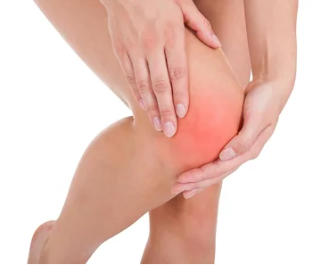
Diagnosis of diseases that cause pain in the knee
Fizikalna examination:
- collect the medical history and complaints?
- visual inspection with palpation of the knee.
Laboratory tests:
- biochemical and clinical blood tests?
- a serological survey of blood?
- immunological blood test?
- rheumatology samples?
- bacteriological analysis of synovial fluid.
Invasive organic methods:
- arthroscopy?
- puncture synovial markets?
- puncture biopsy of bone.
It is a non-invasive instrumental diagnosis:
- x-ray of the knee;
- bone densitometry;
- ultrasound examination of the hip?
- MAGNETIC resonance imaging or COMPUTED tomography.
Treatment of pain in the knee
If the pain in one or both knees non-traumatic nature of the show, then you have to contact first with the doctor, who, on the basis of the complaints of the patient and the results of the objective examination, will lead to a narrow specialist podiatrist, a rheumatologist, taking into account of or a neurologist. When any injury to the knee need to contact your surgeon or the traumatologist-podiatrist.
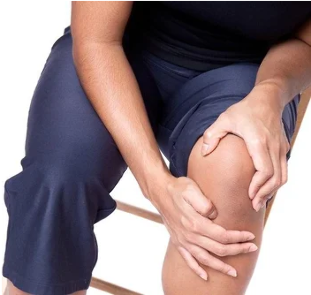
The treatment in each case is different, depends on the cause of the pain, i.e. from the type of injury or disease. For every disease there is a shape of therapy. But for a start, the patient will need to follow a few general rules:
- to significantly reduce the duration of the hike and finding the legs during the day?
- athletes temporarily (until recovery) to quit the workout, as well as ordinary people from running or jumping?
- with regard to the strengthening of the pain completely abandon the moves to impose the knee fixing bandage of elastic bandage?
- wearing a bandage or a bandage for immobilization of the knee joint;
- during the injury of cold, in place of traumatic exposure.
Rheumatoid, psoriatic arthritis, systemic autoimmune disease need severe complex treatment, is based on many months. The basic treatment consists of immunosuppressive drugs, non-steroidal anti-inflammatory and hormonal drugs, drugs, gold etc.
When treatment of bursitis used painkillers and anti-inflammatory drugs. If you have some infection, then the course of antibiotics. Therapeutic paracentesis shopping is performed to remove the excess fluid from the synovial cavity and/or the introduction of a corticosteroids. From chronic inflammation of the bursa of these, it helps to get rid surgery – the surgical excision of synovial markets.
When deforming osteoarthritis effective intra articular injections of corticosteroids, the long-term use of NSAIDS and chondroprotectors. For pain relief at the local level appoint compresses with dimexide, or bischofite, ointments, gels, anti-inflammatory action. Of these, it helps massage, physiotherapy, therapeutic gymnastics. Heavy defeat of the knee require surgery – arthroplasty of the hip.
The treatment of osteoporosis is, of course, taking bisphosphonates, calcitonin, calcium preparations, vitamin D, etc.
The treatment of rupture of the meniscus may be conservative or surgical. Conservative treatment consists of applications of analgesics, NSAIDS, hyaluronic acid, chondroprotectors. But first, producing you move the audience.
Kinds of surgery:
- meniskèktomiâ;
- partial (part-time) meniskèktomiâ;
- transplantation of meniscus;
- arthroscopy?
- arthroscopic suture of rupture of the meniscus.
When any injury to the knee after the treatment it is very important recovery period, you must pass under the control of a rehabilitation or orthopedic surgeon. The doctor will be the best program for the restoration of the joint function. The techniques of post-operative recovery are considered to be massage, and therapeutic exercises. It is also effective lessons on special simulators, gradually development of the knee joint.














































